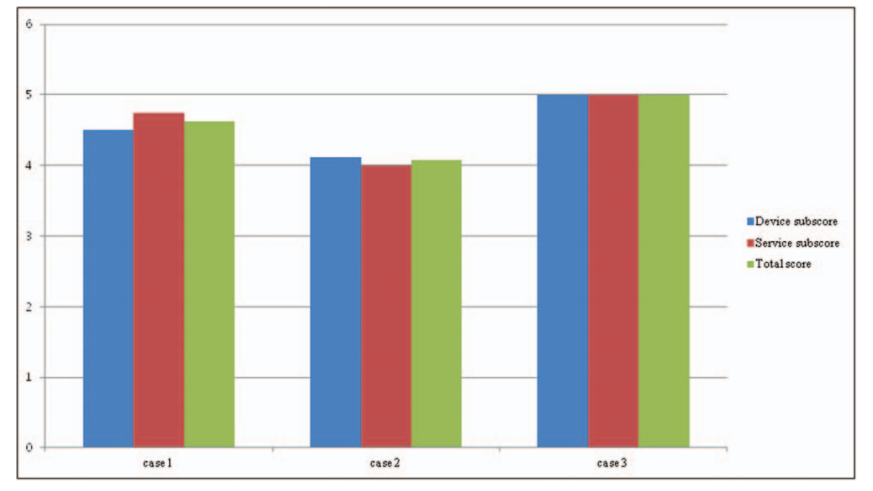Releasing the findings of recent case studies in ‘The functional effect of 3D-printing individualized orthosis for patients with peripheral nerve injuries,’ the authors detail how 3D printed orthotics benefited three different patients suffering from peripheral nerve injuries.
A variety of devices are available to individuals requiring orthotics for better functionality, but the authors focus on creating practical devices that still offer comfort, compliance, functionality, and are attractive enough for the wearer to avoid feeling self-conscious. Researchers continue the commitment to improving the lives of patients around the world, using the growing accessibility and affordability in 3D printing to create medical models and devices.
CT images were used to gain the initial required data to make orthotics. Geomagic Freeform software was used for 3D design, with structures fabricated on a Finebot Z420 3D printer.
“We used thermoplastic polyurethane filament as the output orthotic material, and the output surface directly touching the skin was smoothed through a post-printing process, which removed byproducts used as supporting structures during the fused filament fabrication-type printing process,” said the researchers.
Post-processing also included the use of a grinding machine and pincers, used for removal of materials and polishing. No additional adjustments were required except for attaching Velcro straps an ankle joint area reinforcement.
Cases were presented as follows:
- #1 – 55-year-old male received wrist orthosis for carpal tunnel syndrome, with most hand function improving afterward.
“After 2 weeks of the use of wrist carpal tunnel orthotics, the grasp power was 22 kg, lateral pinch was 7 kg, palmar pinch was 4 kg, and tip pinch power was 6 kg. VAS score was decreased from 7 to 3. The mean score of JHFT was improved from 12.85±1.77 to 14.12±0.89. The Total QUEST score was 4.62.”

Wrist orthosis for carpal tunnel syndrome: (A) palmar view, (B) dorsal view. Ulnar wrist orthosis: (C) palmar view, (D) dorsal view. Ankle-foot orthosis: (E) anterior view, (F) lateral oblique view.
- #2 – 59-year-old male received ulnar wrist orthosis for ulnar neuropathy, with positive results.
“After 8 weeks of the use of ulnar wrist orthotics, the grasp power was 18 kg, lateral pinch was 3 kg, palmar pinch was 3 kg, and tip pinch power was 1 kg. The VAS score was improved from 6 to 4. The mean score of JHFT was decreased from 9.85±2.91 to 9.00±4.24. The total QUEST score was 4.08.”
- #3 – 72-year-old female received ankle-foot orthosis for lumbar radiculopathy, also with very good results.
“She could walk and received gait training with 3D-printing manufactured AFO for 4 weeks. The distance of the 6MWT was increased from 62.5 to 100 m. Total mEFAP score was improved from 182.97 to 104.07 seconds. The stability score with eyes open was improved from 77 to 82, and the stability score with eyes closed was improved from 43 to 63. The total QUEST score was a perfect score, 5.00.”
“Mass produced, ready-made orthoses are of lower quality are bulky, and are uncomfortable to wear compared to custom-made wrist orthoses. However, custom-made wrist orthoses are more expensive than ready-made ones and take a long time to produce. The 3D printer technology can overcome these problems by producing personalized medical products with low cost and reduced time. 3D-printing data files are also advantageous for the production of individualized products at no extra cost, even when different designs are used in consecutive production runs,” concluded the researchers.
“In QUEST items, all 3D-printed devices showed high scores (more than 4 out of 5 points). On the whole, the patients with peripheral nervous system injury were satisfied with the 3D-manufactured orthosis. Conclusively, we designed and manufactured a patient-specific assistive device through 3D printing techniques optimized for patient function after estimating the disability status of a patient with peripheral nerve injury.”
What do you think of this news? Let us know your thoughts! Join the discussion of this and other 3D printing topics at 3DPrintBoard.com.
[Source / Images: ‘The functional effect of 3D-printing individualized orthosis for patients with peripheral nerve injuries’]Subscribe to Our Email Newsletter
Stay up-to-date on all the latest news from the 3D printing industry and receive information and offers from third party vendors.
Print Services
Upload your 3D Models and get them printed quickly and efficiently.
You May Also Like
The Market and Industry Potential of Multi-Material 3D and 4D Printing in Additive Electronics
Additive manufacturing leverages computer-based software to create components for products by depositing either dielectric or conductive materials, layer by layer, into different geometric shapes. Since its birth in the 1980s,...
3DPOD 262: Bio-inspired Design for AM with Dhruv Bhate, Arizona State University
Dhruv Bhate is an associate professor at Arizona State University. There, he looks at structures, materials, and design. Previously, he worked at PADT as well as in the semiconductor and...
3DPOD 261: Tooling and Cooling for AM with Jason Murphy, NXC MFG
Jason Murphy´s NXC MFG (Next Chapter Manufacturing) is not a generalist service; instead, the company specializes in making tooling. Using LPBF and binder jet, the company produces some of the...
3DPOD 260: John Hart on VulcanForms, MIT, Desktop Metal and More
John Hart is a Professor at MIT; he´s also the director of the Laboratory for Manufacturing and Productivity as well as the director of the Center for Advanced Production Technologies....



































